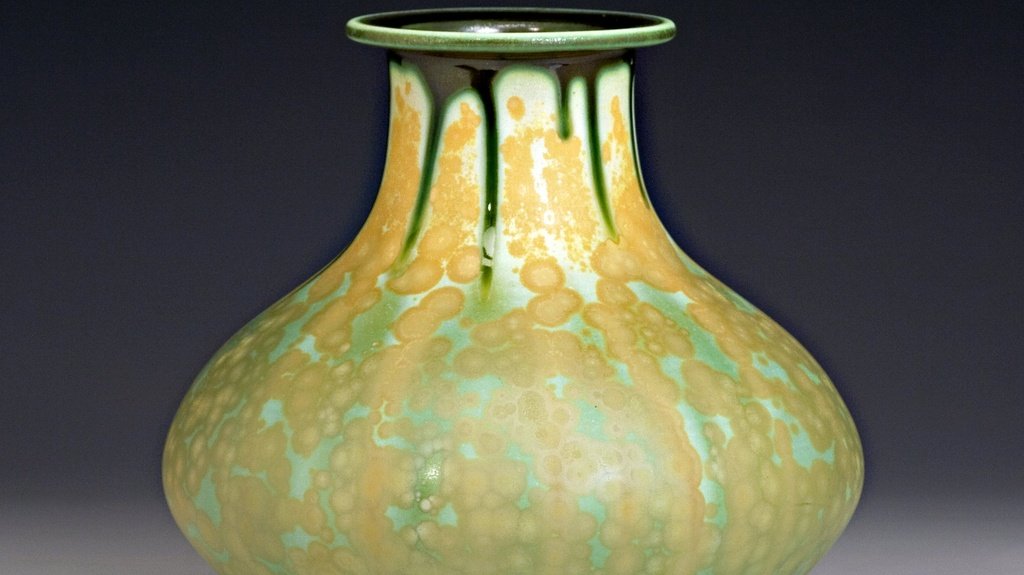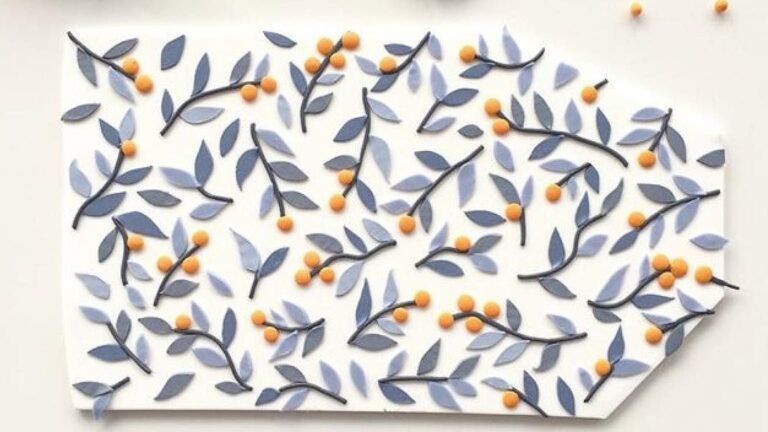What is crystalline glaze? Explained!
Pottery is an amazing form of art. Ceramic items are astonishing, charming, and beautiful. However, one particular form of potter always amazed people around the world. Crystalline glaze is loved by potters and owners for its unique, mesmerizing features. But, what is crystalline glaze pottery exactly?
Crystalline glazes are one of the many types of glazes known in pottery. Crystalline glaze show visible crystal growth on the surface of the fired glaze. Those crystals vary in size and color but they are clearly visible. Moreover, they can grow up to five inches across the glaze matrix.
Crystalline glazes are seductive and instantly capture the eye. How exhilarating to create a glaze that suggests floating galaxies, frosty windows, rare gemstones, or flowers. If you are reading this article, it means that you are interested in crystalline glaze. I will gladly provide information about the composition, firing process, functionality, and other important details regarding crystalline glaze pottery.
Why is Crystalline Pottery so Expensive?
If you browse through online shops, you will discover that crystalline pottery items are quite expensive. They are indeed beautiful, but is that really what makes this pottery so high-end?
Well, the answer to that question is both yes and no. The first reason behind the high price of crystalline pottery lies in the complex firing process. To achieve desired results, an artist must complete a very complex firing process.
Firing crystalline pottery is difficult. Every individual piece is fired on a pedestal and dish to protect the kiln, as glaze often runs off during firing and can damage the surface of the kiln.
As crystalline pottery is valuable for its big and vivid crystals, potters must take time during firing to let crystals grow. When a crystal glaze reaches a thousand hundred and forty-degree Celsius crystals will slowly pop up like a needle
Crystalline glaze typically has a high failure rate, which can be frustrating and expensive, however when it works the effects are totally worth the price!
The high price of crystalline glaze comes from the amount of effort, time, and mastery are needed to create one piece.
What is a Crystalline Glaze Made of?
Crystalline is a specific kind of glaze where zinc silicate crystals form in the glaze during the firing process in the kiln. The glaze is mixed using a variety of raw materials, some measured in minute amounts.
Crystalline glaze consists of three main ingredients. Zinc oxide and silica make up approximately 50% of the glaze and these are ingredients that form beautiful crystals. A mixture of those two ingredients is called zinc silicate.
The remaining 50 percent consists of various ingredients that form or flux the glass melt, which can include boron, magnesium, calcium, lithium, sodium, and potassium.
The most frequently used colorants are cobalt, copper, iron, manganese, nickel, and rutile. IN some rare cases, potters use gold, silver, uranium, and some rare earth metals. All of those colorants can be used both individually and in combination with each other.
When buying zinc oxide, make sure that it is calcined. If it is not, you should calcine it yourself. This is not a complicated procedure, but buying pre-calcined zinc oxide will help you to save time and energy.
How do You Fire a Crystalline Glaze?
In order to create different crystal growth formations, you should use a complex schedule with several temperature levels and ramps.
In most cases, crystalline glaze firings happen in an electric kiln. It is possible to fire in a fuel kiln. You can decide which type of kiln is better for you but take into consideration that the kiln you use must be capable of going to cone 10 or even cone 11 without any problems.
The kiln is fired to a maximum temperature of around 1300c (cone 10) and then cooled to specific holding temperatures to allow crystals to form in the glaze. Cooling happens either by shutting the kiln off or using a predetermined cooling rate until it reaches the temperature where the crystals can grow.
The amount of time held at this temperature contributes to the size of the crystals. Crystals occur randomly in the glaze, making each piece unique.
How do You Use Crystalline Glaze?
Well, we have considered many complicated aspects of crystalline glaze. Now, it’s time to speak about its functionality.
These dramatic and beautiful glazes are largely used on decorative pieces such as vases, decorative bowls and plates, Christmas and Easter ornaments, and miniatures. These pieces bring cozy and unique vibes to every room.
I love decorating rooms with colorful crystalline glaze plates and bowls. They go with many different designs and are always charming!
Is Crystalline Pottery Food Safe?
Indeed, crystalline glazed items are beautiful but not very functional. They are often most likely not to be food-friendly. That’s why you will almost never find any practical kitchenware made from crystalline pottery.
But why this beautiful pottery is not food safe? Crystalline pottery items are saturated and the Al2O3, the very substance most needed to make a stable, durable glaze is purposely almost zero. That means they will leach and lack fired hardness.
In addition, the metallic fluctuations are not securely affixed chemically to the glass matrix (this is why they crystallize out), so pieces of the surface, especially the crystals, are leachable in acids or bases. Crystalline glazes have heightened thermal expansion and craze. So, crazed glazes are not believed to be functional and they severely weaken fired ware.
Therefore, I suggest people use their crystalline plates, mugs, and bowls as serving dishes only. Foods such as fruit, cheese and crackers, and other non-oily items can be safely placed on crystalline kitchenware.
You can serve foods with oils or sauces in them, so long as they are not vacated in the vessel long enough to absorb these substances. I do not recommend cooking in a crystalline bowl or storing food in them.
Enjoy your beautiful crystalline glazed pottery as a serving piece, then remove the food soon after your meal is over.








